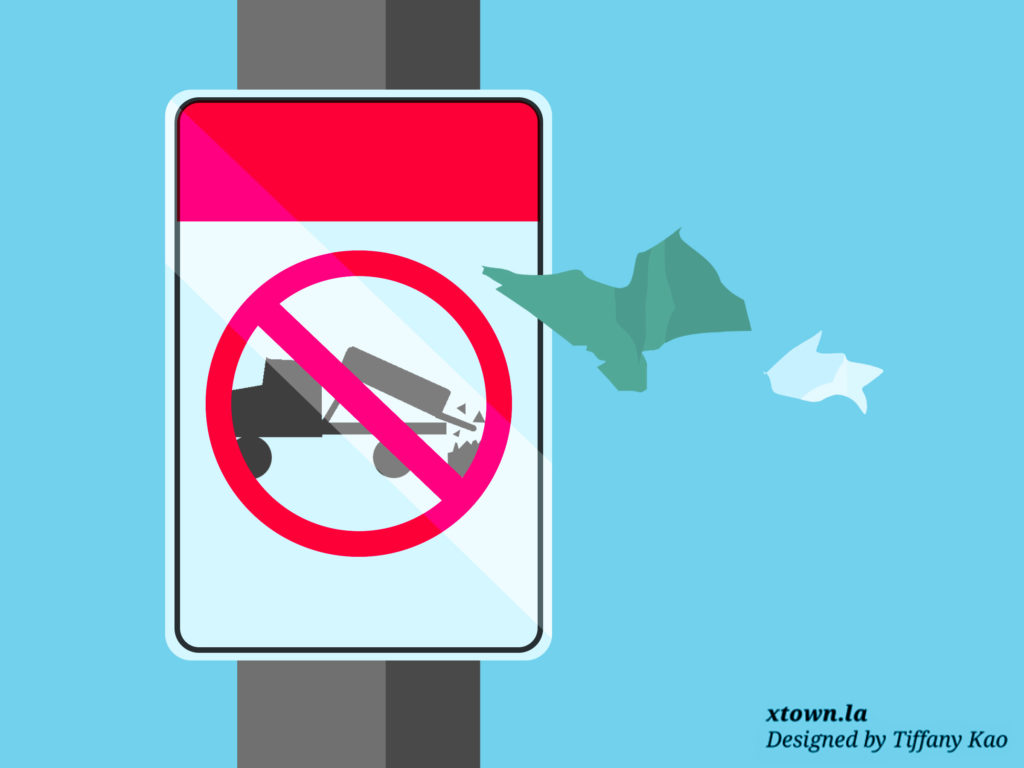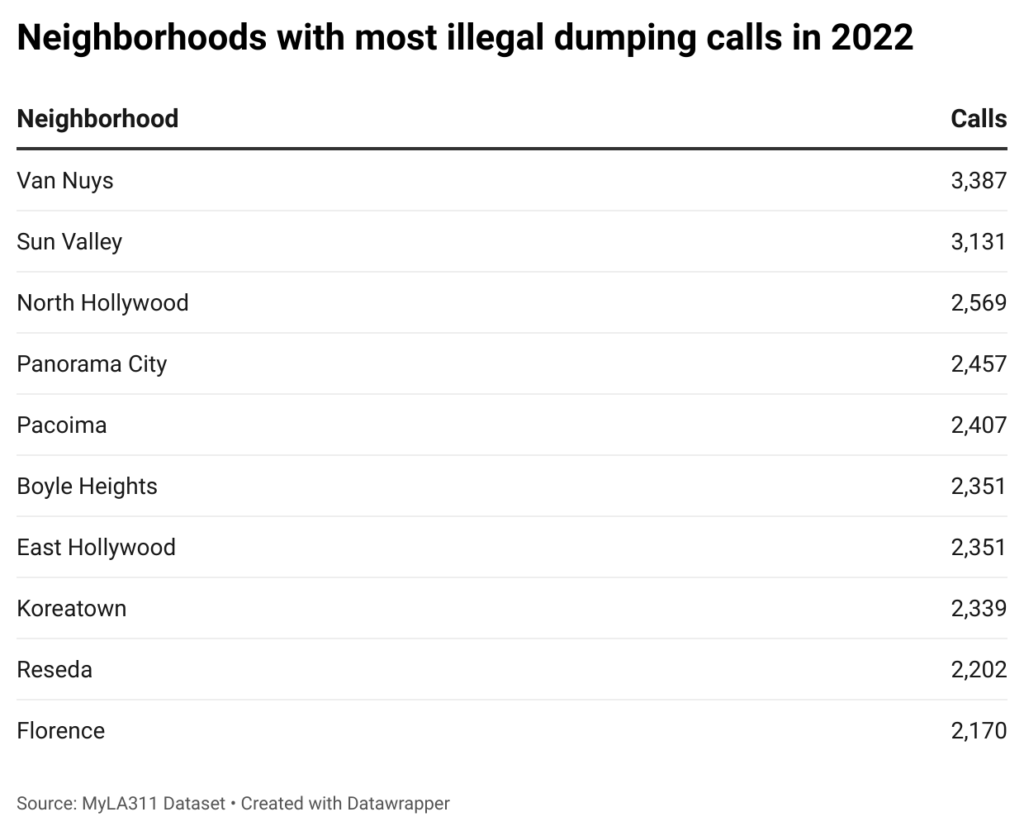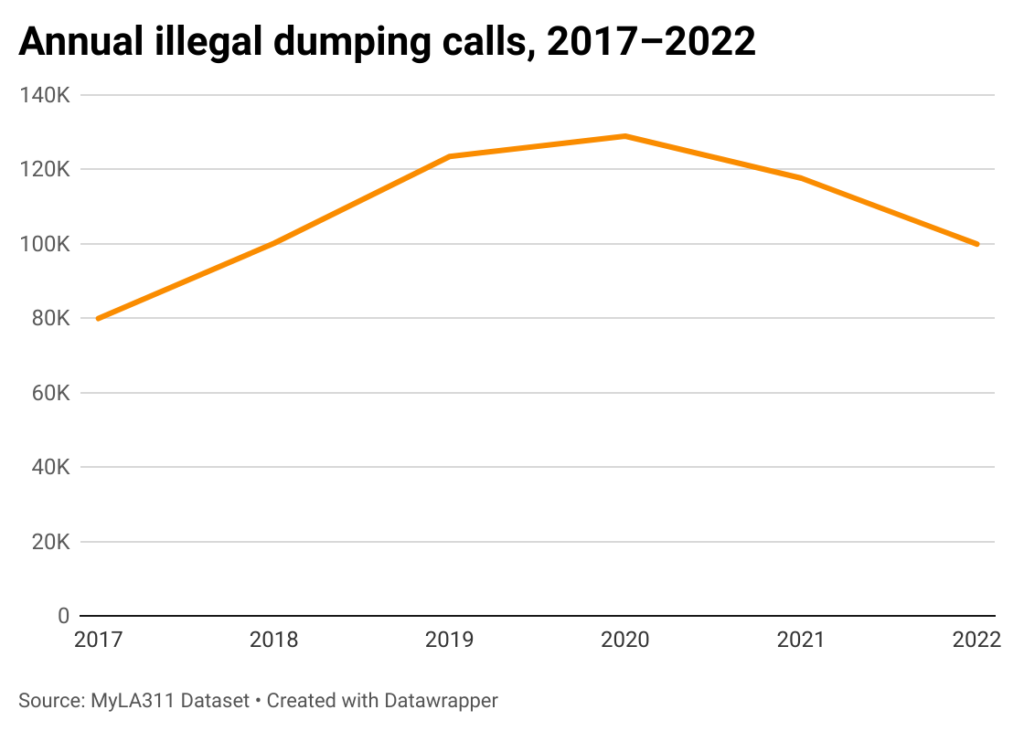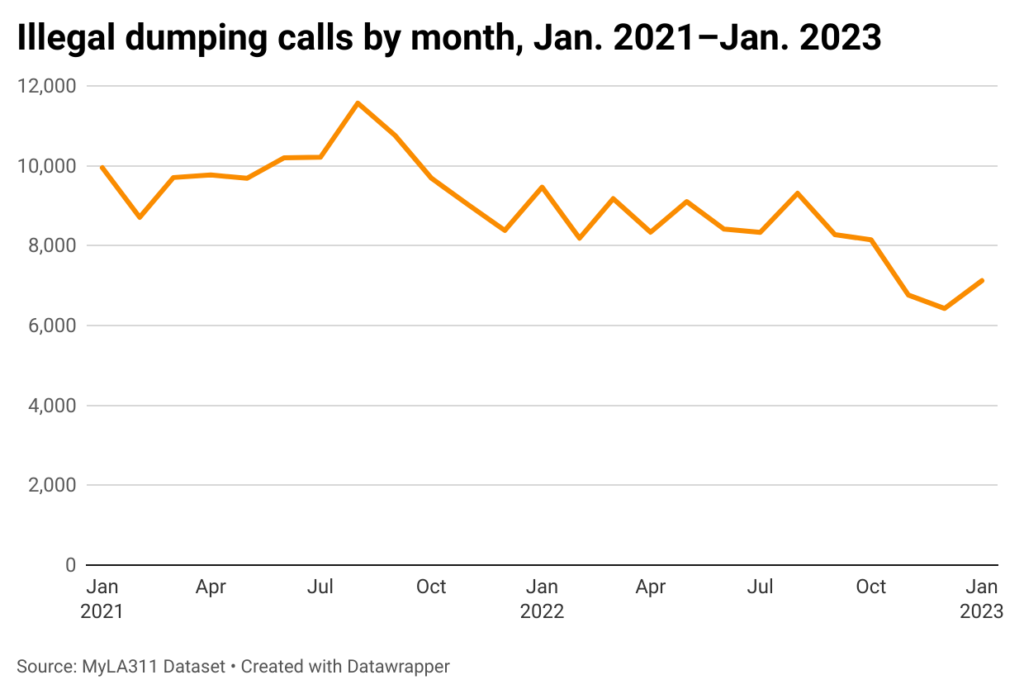Illegal dumping falls citywide, but remains a scourge in the Valley

During a recent forum for the open Sixth District City Council seat, there was plenty that divided the candidates hoping to succeed disgraced former officeholder Nury Martinez. But there was one point all six people on the stage in an Arleta church could agree on: Illegal dumping is a blight on the neighborhoods of the Northeast San Fernando Valley.
Candidate Marco Santana said more residents need to know how to utilize the city’s free MyLA311 service, which dispatches clean-up crews when residents complain. Isaac Kim suggested, “We need to make that a bigger punishment if someone is caught dumping.” A third candidate, Douglas Dagoberto Sierra, summed up the situation with a simple, “It’s ridiculous.”
[Get COVID-19, crime and other stats about where you live with the Crosstown Neighborhood Newsletter]
Candidate Imelda Padilla went further, recalling her time working in Panorama City as a field deputy to Martinez.
“We need to be more aggressive to reduce illegal dumping, especially by construction companies, who just tend to place it in the industrial corridors of Sun Valley, the alleys of Arleta, and in between housing in Panorama City,” she remarked.
The comments were not overstated. According to publicly available MyLA311 data, three of the four neighborhoods in the city with the most illegal dumping calls last year were in the Sixth District. Van Nuys produced the highest number of complaints, with 3,387. Right behind was Sun Valley, with 3,131.

The concerns about dumping in the district overshadow a bit of positive news: Complaints about the practice across the city have declined for the last two years. There were 99,936 calls in 2022, a 22.5% decrease from the peak of almost 129,000 reports in the pandemic year of 2020.
Before that, calls had increased annually for several years.

Boxes, concrete and beyond
Illegal dumping takes many forms, and often involves someone seeking to avoid paying disposal fees, whether for a trash container at a business, or at a public dump.
Sometimes it is Toy District merchants in Downtown tossing empty cardboard boxes into an alley. Or it can be what Padilla described: construction companies or contractors driving at night into Valley communities—often exiting the 5, 118 or 170 freeways—and dropping piles of busted-up concrete or other materials, and then speeding away.
In certain instances it involves the dumping of hazardous materials, scofflaws opting to let the clean-up be someone else’s concern.
It is also a longstanding problem. Back in 2002 the city introduced an illegal dumping crime-tip program. It has not operated for years, but last September local leaders discussed reviving it, with potential payouts of up to $1,000 if a report leads to a misdemeanor or felony conviction.
In 2021, then-City Controller Ron Galperin issued a report on the problem. Titled Piling Up, it found that the Bureau of Sanitation had insufficient resources to combat the practice.
“There are only 19 illegal dumping surveillance cameras stationed across our 470-square-mile metropolis,” the report stated. “Enforcement too is problematic, as there is no comprehensive strategy to approach the issue.”
Mayor Eric Garcetti discussed dumping in his final State of the City address last April, saying additional sanitation workers would be hired to respond to calls more quickly.
While promises and reports from politicians may not have sparked a change, calls did decline as 2022 progressed. After 9,310 reports in August, complaints fell every month for the rest of the year, down to 6,428 in December.

In the first month of 2023, the MyLA311 system recorded 7,123 illegal dumping reports.
How we did it: We examined publicly available MyLA311 data from the City of Los Angeles from Jan. 1, 2015–Dec. 31, 2022. For neighborhood boundaries, we rely on the borders defined by the Los Angeles Times. Learn more about our data here.
Want to know more about how your neighborhood fares? Or just interested in our data? Email us at askus@xtown.la.






